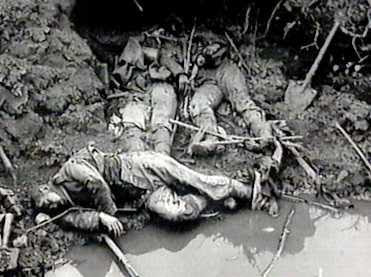David Padlie (#20625)
UNDERHILL FARM CEMETERY
Comines-Warneton
Hainaut
Belgium
Location Information: Underhill Farm Cemetery is located 12 Km south of Ieper town centre, on a road leading from the Rijselseweg N365, which connects Ieper to Wijtschate, Mesen (Messines) and on to Armentieres. From Ieper town centre the Rijselsestraat runs from the market square, through the Lille Gate (Rijselpoort) and directly over the crossroads with the Ieper ring road. The road name then changes to the Rijselseweg. 3 km after the town of Mesen (Messines) lies the right hand turning onto the Rue du Petit Pont. (Kleine Brugstraat). 1 Km along this road on the right hand side of the road lies the cemetery.
Historical Information: Underhill Farm and Red Lodge were the names given to two buildings on the north-western edge of Ploegsteert Wood. They were occupied by dressing stations and the cemetery which they used is close to the farm. The cemetery was begun in June 1917 and used until January 1918. It fell into German hands in the spring of 1918, when it was used under the name of "The Military Cemetery at the foot of the Nightingale Hill". The cemetery was recovered in September 1918 and used again for Commonwealth burials until October. There are 190 Commonwealth casualties of the First World War buried or commemorated in this cemetery. Nine of the burials are unidentified and special memorials commemorate five casualties whose exact places of burial in the cemetery could not be determined.
 | ||
 |
 |
 |
Peter ‘Pona’ Te Whata (#20621)
MAPLE LEAF CEMETERY
Comines-Warneton
Hainaut
Belgium
Location Information: Maple Leaf Cemetery is located 14 kilometres south of Ieper town centre, on a road leading from the Rijselseweg, N365, which connects Ieper to Wijtschate, Mesen (Messines), Ploegsteert and on to Armentieres. From Ieper town centre the Rijselsestraat runs from the market square, through the Lille Gate (Rijselpoort) and directly over the crossroads with the Ieper ring road. The road name then changes to the Rijselseweg. On reaching the village of Ploegsteert, turn right at the church onto rue du Romarin. At the end of this road lies the left hand turning onto Niepkerkestraat (for only 50 metres), then immediately right onto Zakstraat. The cemetery is located 50 metres beyond the right hand turning onto Zakstraat.
Historical Information: Maple Leaf Cemetery was begun in December 1914 by fighting units and field ambulances, but from July 1915 to April 1916, the village was occupied by the advanced dressing station of the 3rd Canadian Field Ambulance and the cemetery thus acquired its present name. The last Commonwealth burial was made in December 1917, but German graves were added in April 1918 when the cemetery was in German hands. The cemetery contains 167 Commonwealth and nine German burials of the First World War.
 |
 |
 |
| "Shout out" to the following website for all of the photos and information (see above) included on this page www.findagrave.com |




























